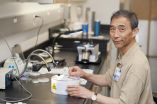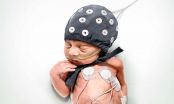(Press-News.org) By unlocking the secrets of a bizarre virus that survives in nearly boiling acid, scientists at the University of Virginia School of Medicine have found a blueprint for battling human disease using DNA clad in near-indestructible armor.
"What's interesting and unusual is being able to see how proteins and DNA can be put together in a way that's absolutely stable under the harshest conditions imaginable," said Edward H. Egelman, PhD, of the UVA Department of Biochemistry and Molecular Genetics. "We've discovered what appears to be a basic mechanism of resistance - to heat, to desiccation, to ultraviolet radiation. And knowing that, then, we can go in many different directions, including developing ways to package DNA for gene therapy."
Finding effective packaging for DNA delivery is important because the human body has many ways to degrade and remove foreign DNA - that's how it combats viruses. But that protective mechanism becomes a major obstacle for doctors seeking to use genes to battle disease. Creating an impenetrable packaging would overcome that problem, and this strange virus offers a promising template.
The virus, SIRV2, infects a microscopic organism known as Sulfolobus islandicus that lives in what Egelman described as "extremely unusual" conditions: acidic hot springs where temperatures top 175 degrees Fahrenheit. The research identified surprising similarities between the SIRV2 virus and the spores bacteria form to survive in inhospitable environments. "Some of these spores are responsible for very, very horrific diseases that are hard to treat, like anthrax. So we show in this paper that this virus actually functions in a similar way to some of the proteins present in bacterial spores," he said. Spores are also formed by C. difficile, which now accounts for approximately 30,000 deaths per year in the U.S. and has been classified by the Centers for Disease Control and Prevention as having a threat level of "urgent." "Understanding how these bacterial spores work gives us potentially new abilities to destroy them," Egelman said. "Having this basic scientific research leads in many, many directions, most of which are impossible to predict, in terms of what the implications are going to be."
So how does the virus survive such inhospitable conditions? SIRV2, it turns out, forces its DNA into what is called A-form, a structural state identified by pioneering DNA researcher Rosalind Franklin more than a half-century ago. "This is, I think, going to highlight once again the contributions she made, because many people have felt that this A-form of DNA is only found in the laboratory under very non-biological conditions, when DNA is dehydrated or dry," Egelman said. "Instead, it appears to be a general mechanism in biology for protecting DNA."
Egelman and his colleagues were able to crack the mystery only because of the remarkable power of UVA's new Titan Krios electron microscope. Buried deep below Fontaine Research Park, the massive microscope is insulated within many tons of concrete to provide the stability needed to examine biological samples in previously impossible detail. The microscope is one of only a few of its kind in the world, and was funded, in part, by the National Institutes of Health. Researchers from far and wide, both at UVA and beyond, are tapping its power.
Egelman's findings are among the first to result from UVA's Titan, but others are expected to follow soon. The discovery has been described in the prestigious scientific journal Science in an article authored by Frank DiMaio, Xiong Yu, Elena Rensen, Mart Krupovic, David Prangishvili and Egelman.
INFORMATION:
Mitsuyoshi Nakao, Director of the Institute of Molecular Embryology and Genetics in Kumamoto University and Associate Professor Noriko Saitoh revealed that a cluster of defined, non-coding RNAs are mechanistically involved in endocrine therapy resistance in human breast cancer cells. Furthermore, resveratrol, a kind of polyphenol, was found to repress these RNAs and inhibit the proliferative activity of breast cancer cells which had acquired resistance. The work was published in Nature Communications on April 29th, 2015.
Breast cancer is one of the most common types ...
This news release is available in French.
Commuting length, distance, and means are stress factors that can lead to burnout, says Annie Barreck of the University of Montreal's School of Industrial Relations. "A correlation exists between commuting stress factors and the likelihood of suffering from burnout. But their importance varies according to the individual, the conditions in which their trips take place, and the place where the individual works," she explained. Barreck will present her research today at the 83rd congress of the Association francophone pour ...
In a new national survey of rheumatoid arthritis (RA) patients, Health Union found a severe impact on quality of life, employment, and ability to afford treatment. The autoimmune condition attacks the body, resulting in joint inflammation, pain, stiffness, and swelling, but may also harm other organs. About 1.3 million Americans or about one percent of the global population have RA.
Ninety-four percent of respondents with RA said they cannot do as much as they were able before acquiring the disease. Additionally, 67% said others do not understand the severity of their ...
Protected areas are the cornerstone to prevent species extinctions. The Convention on Biological Diversity have set a target to protect 17% of all terrestrial land by 2020.
Many of the international recommendations concerning protection goals are provided for single countries to take action individually. Researchers in the University of Helsinki, Finland, stress the importance of international collaborations in the protected area expansion process.
"It has been shown that working at the country level is less efficient than promoting transnational collaborations. As ...
New UK research has challenged the assumption that people with rheumatoid arthritis always take their medication as prescribed.
Researchers from the Arthritis Research UK Centre for Epidemiology at The University of Manchester found that 40% of patients scored low on an adherence questionnaire at least once during their time in a recent study, indicating that they might not be taking their expensive biological therapies as regularly as prescribed.
Their research is published online in the journal Rheumatology.
The findings have prompted Arthritis Research UK's head ...
Cough treatments could change dramatically after the herpes virus helped researchers discover that the respiratory tract links to two different parts of the nervous system.
A research team led by The University of Queensland's Dr Stuart Mazzone made the important breakthrough after setting out to learn more about the triggers behind excessive coughing.
"Different physical sensations arise from the upper and lower respiratory tracts in people with respiratory diseases," said Dr Mazzone, from the School of Biomedical Sciences.
"The irritating sensations from the upper ...
Polymer solar cells are a hot area of research due to both their strong future potential and the significant challenges they pose. It is believed that thanks to lower production costs, they could become a viable alternative to conventional solar cells with silicon substrates when they achieve a power conversion efficiency--a measure that indicates how much electricity they can generate from a given amount of sunlight--of between 10 and 15 percent. Now, using carefully designed materials and an "inverted" architecture, a team of scientists has achieved efficiency of 10 percent, ...
Giant strides have been taken in the early care of very premature infants in postnatal intensive care units during the past two decades. Doctors can now support the function of especially the lungs, heart and the circulatory system so as to guarantee the survival of most of even extremely premature infants.
Despite a good start, many of these may still have lifelong problems with brain function, such as attention deficit disorders or difficulty with visual function. For this reason, the primary focus of developing care for premature infants has been on securing brain ...
HANOVER, N.H. - If you're a college student wondering how your study and party habits will affect your GPA, wonder no longer. Dartmouth researchers and their colleagues have built the first app that automatically predicts college students' grade point average based on their smartphone data.
The findings offer new ways to improve students' performance, providing real-time feedback on their studying, partying, sleeping, exercising and other conscious and unconscious behaviors to help them stay on track academically.
Dartmouth computer science Professor Andrew Campbell, ...
BLOOMINGTON, Ind. -- Air pollution regulations issued by the U.S. Environmental Protection Agency are estimated to save thousands of lives annually. A new study by researchers at Indiana University says these estimates are more uncertain than commonly believed.
Researchers Kerry Krutilla, David H. Good and John D. Graham of the IU School of Public and Environmental Affairs analyzed the costs and expected lifesavings of nine regulations issued between 2011 and 2013. The bulk of these regulations require national emissions standards for hazardous air pollutants. The analysis ...




